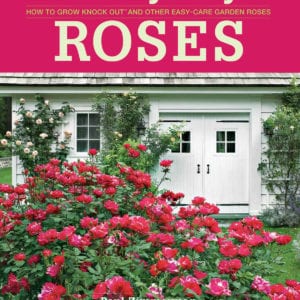|
RNRS Pruning Trials—Important
Corrections to my Report
In our December newsletter I reported on the trials
of the Royal National Rose Society where the results of three
methods of pruning roses were studied. It was brought gently to my
attention by friends in England that I didn’t quite get it right. I
offer most humble apologies, particularly to those who may have felt
justified in never pruning their roses.
RNRS Pruning Trials
The error in my report had to do with the third
pruning method, which I characterized as a group that was NOT
pruned. In fact this group of roses WAS pruned in a fashion
described as ‘rough pruning.’ The roses in these blocks were in fact
cut back roughly, by hand pruning to shorten the plants. They were
not thinned, no deadwood was removed, and the cuts were made without regard to the location of growth buds, or to the angle of the cuts.
Both the ‘rough pruned’ and hedge-trimmer pruned roses scored higher in
the initial evaluations than the roses pruned in the traditional method, where plants were thinned, and opened up in the centers. In particular it was noted that these two groups resulted in plants
that produced ‘stronger growth…and in many cases, better flowering
performance than traditional pruning.
Restrained Pruning
I have received many letters from those of you who
agree with my notion that leaving plants un-pruned gives them a
better chance to develop naturally and more strongly than roses that
are regularly thinned and diminished in size. This notion is one
that I have arrived at after many, many years of growing thousands
of rose cultivars. It first occurred to me when I observed untended
roses in cemeteries that had not been pruned. Those plants thrived
with little or no care, no summer water, and often seemed to
outshine most of my own carefully controlled plants.
In the mid-1990s I began leaving sections of my own
garden un-pruned every second year. The plants spent this two year
period bulking up, filling in, and the bloom display in the second
year after pruning was always more spectacular. I have continued to
apply this treatment to most of the Old European roses, the
Bourbons, HPs, Noisettes, Teas and Chinas, which have room to grow
in their plantings. Because I have crowded the HTs and Floribundas
in the traditional beds they occupy in my garden, I find it
necessary to prune them yearly in order to prevent more vigorous
varieties from swamping and setting back weaker, slower growers. I
continue to be convinced that our major purpose for pruning is to
size down plants. I believe that the traditional justifications for
pruning that suggest this intervention helps the plants, making them
better bloomers and healthier plants, is baseless.
Sizing down plants is not however a misguided
activity. Usually we plant a rose with only a vague idea of how big
it will get. And many roses, particularly in our mild climate in
California, achieve dimensions that are difficult to provide for,
especially in a small garden. At the Chambersville Rose Garden in
Texas, which the Heritage Rose Foundation has proclaimed as a study
plot for old roses that thrive in the North Texas climate, Teas and
Chinas have been planted with ample room to grow to their full
potential. Each year that they increase in size they grow more
vigorously and bloom more profusely.
The Art of Pruning—the Art of Gardening
But not all gardens can spread over acres to give
roses their full spread. Gardens like Mottisfont Abbey in England
have been planted in much more compact conditions. Graham Thomas’
design for Mottisfont intended for the old shrub roses to grow large
and full, making stolid shrubs and arching fountains. Yet,
maintaining the balance between the competing inhabitants of this
garden, roses and perennials alike, calls for a careful management
of the plants, and pruning is an integral part of that. Gardeners
who have an opportunity to manage such plantings learn a great deal
about each plant, its needs, its tolerance of pruning and what sort
of pruning it requires. The skill and accumulated knowledge that
they apply results in a garden that, in full bloom, appears rich and
full, blowsy and carefree, as though the plants are scarcely
touched.
We prune roses to control their size, but more
importantly we control their size as a sculptor trims and models her
clay. A garden is a vision that exists in our minds. We work
tirelessly to reveal that vision in three dimensions, with all of
the unpredictability of the living things that are our clay and
paints. We may never arrive at the moment that our creation matches
our vision, but even if that moment arrives it is gone the next
moment, never to return. That is the art of gardening, and pruning,
for better or worse, is one of those techniques we strive to master
for the sake of our art.
Beware the Easy Fix
Leaving your roses un-pruned may or may not achieve the beauty you seek in your garden creation. Trimming with hedge-trimmers may or may not decrease your work in the rose garden. Jon Dodson of Mottisfont Abbey recently shared with me a letter from the August 2007 issue of The Garden, Journal of the Royal Horticultural Society, written by David Bartlett, who had worked at the RNRS gardens on the pruning trials in the 1990s. He was addressing an article by Charles Quest-Ritson in the March issue in which Quest-Ritson asserted that ‘a rough clip with hedge-trimmers gives better results than traditional pruning methods.’ Bartlett takes issue with the reported results of the trials—he himself had both pruned and gathered observational data—and notably says that the hedge-trimmer pruning took longer; ‘…it took a great deal of back-breaking labour to clear up the cuttings.’ One can easily imagine trying to disentangle the pruned tips that had fallen head first into the plants, thorns locked to thorns. He also indicates that the hedge-pruned roses developed more disease in subsequent years and that the disease spread to all of the roses—the result, weakened plants that had eventually all to be removed and replaced.
At the Huntington Gardens in California a new trial
has just been announced by rose curator Clair Martin; ‘we are using
power hedge shears on the large beds of shrub roses like the yellow
‘Sun Flare’ in front of the Rose Garden Tea Room…’ With
characteristic humor, Clair suggests that you may think he’s lost
his mind! His hope is that this will speed the process and produce
improved bloom. We still have much to learn, though I hope that my errors of reporting have not brought on an experiment that may be fraught with ills.
-Gregg Lowery
|
|

